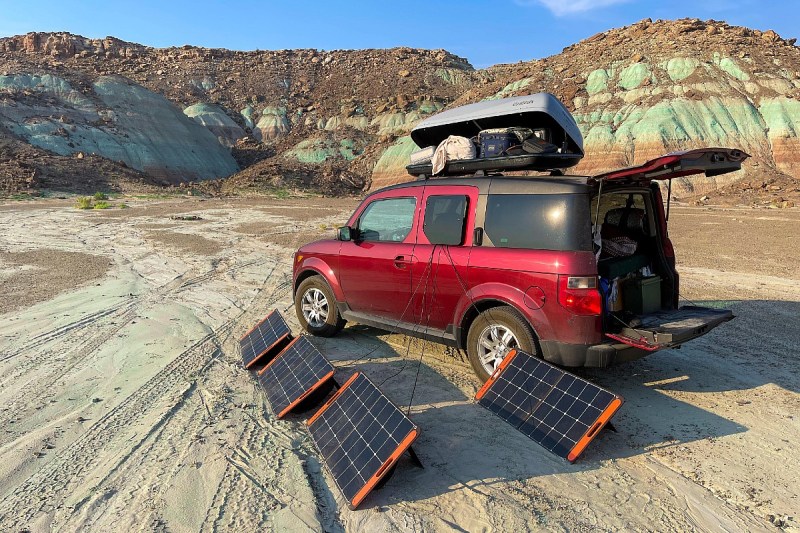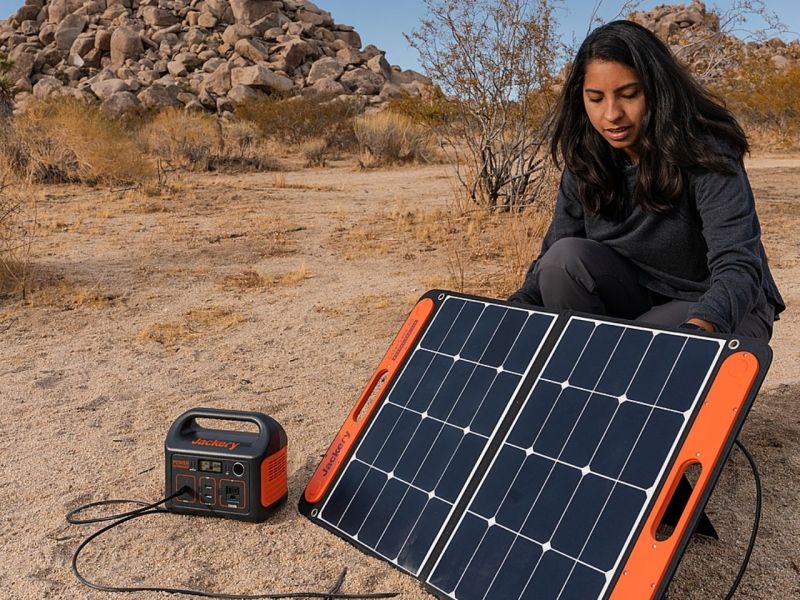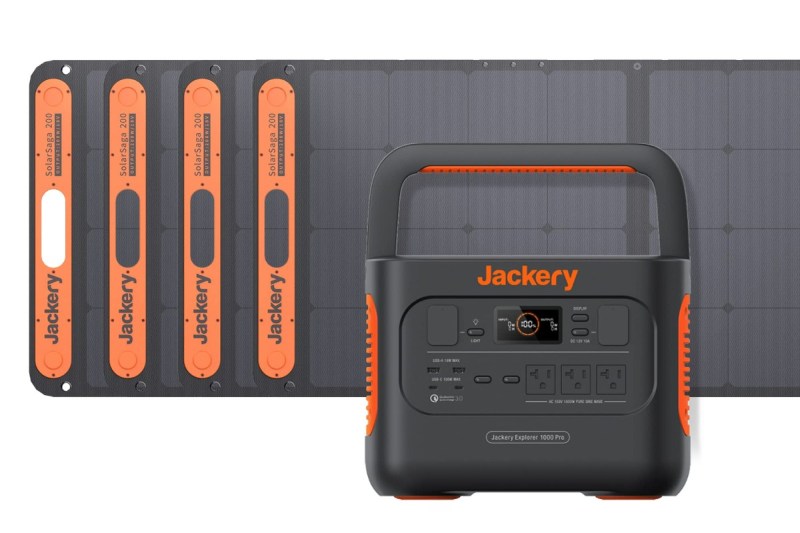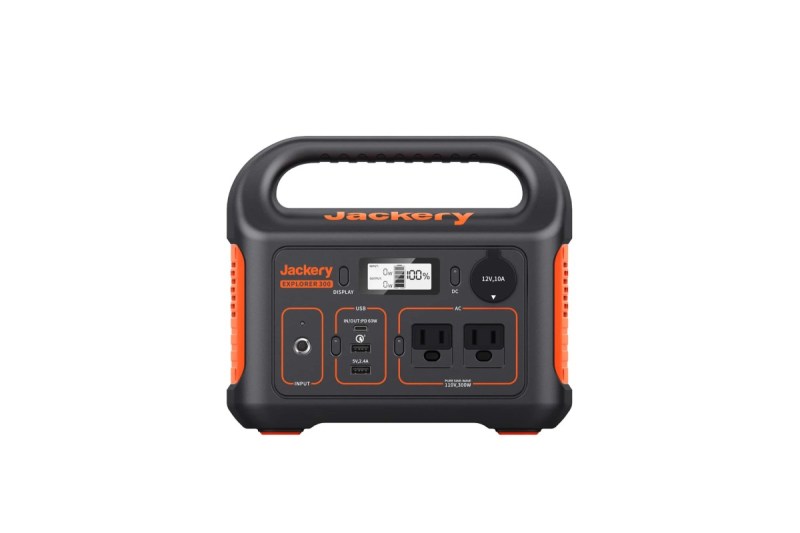
A couple of years ago, I decided to dive into the whole “van life” concept and began converting my Honda Element into a camper. This required some sort of electricity source for my fridge, laptop, lighting, and a myriad of other power-hungry devices.
At first, I thought I’d rig up a second car battery with an inverter — which had been a common solution among the van-life crowd for many years — but then I stumbled upon the growing field of portable power stations, also known as portable solar generators.
The technology was rather new, at least as far as portable solar solutions that were actually relatively affordable and reliable went. After trying various brands and product formats, I landed on the Jackery Explorer 1500, which powered me (or my devices, rather) all over the U.S., Mexico, and Canada. Since then I’ve tried Jackery solar generators of all different sizes, and I’ve come to know which are the best for different situations. Let’s take a look at which Jackery solar generator is the best for your needs.

An overview of Jackery solar generators
I’ve tried many different portable power station brands, and many are great options, but I tend to go with Jackery because they have a solid balance of power capacity, portability, and durability. They range in size from the Explorer 160 to the Explorer 2000 Pro, and the prices and power capacities range accordingly.
For our purposes here, we’re going to look at three scenarios. We’ll assume that you’re either looking for the best balance of size and portability, battery capacity above all else, or something portable and affordable. These are your best options for each of these circumstances.

Most versatile: Jackery Solar Generator 1000 Pro
I think of this as the Goldilocks Jackery. It’s not too large, but not too small. That means it offers outstanding portability along with a solid amount of capacity. And the Pro package includes four of the company’s outstanding SolarSaga 200-watt solar panels.
With its 1002-watt-hour capacity, the 1000 Pro will power a medium-sized van-life setup (we’re talking a mini-fridge, lights, and devices) for a solid two days between charges. When it’s time to top off the juice, it has a speedy 1.8-hour charging time when plugged into the wall or using all four solar panels (in ideal sun conditions, of course). That’s a lot faster than the non-Pro Explorer 1000, which takes seven hours to recharge. With three AC plugs, a 12-volt car jack, two USB-A ports, and two USB-C ports, it’s got plenty of outlet options.
I’ve deemed the Explorer 1000 Pro “most versatile” because it can suit just about any purpose. It’s a solid emergency backup power source at home, great for outdoor worksites requiring power tools, and ideal for a van conversion.

Best for high-capacity use: Jackery Solar Generator Explorer 2000 Pro
If you have a larger van conversion with heftier electrical needs, a full-sized RV, or require greater at-home backup power, the 2000 Pro — Jackery’s largest power station yet — is an outstanding option. With the six-panel package you charge its massive 2,160-watt-hour capacity in 2.5 hours, and that 2k+ capacity can keep you going for days between recharges.
It’s heavier and larger than the 1000 Pro, and with all six panels, the whole setup can be downright unwieldy, which makes it less than ideal for moving around. But if you’ve got the camper rig for it or will be leaving it in place at home, it’s a great option.

Best for small-scale uses: Jackery Solar Generator Explorer 300
For smaller power uses like keeping a few devices charged during a weekend of camping, or merely for a bit of backup power at home, the Explorer 300 is as small as I’d recommend going. While there are smaller, slightly cheaper models available, anything less than its 293-watt-hour capacity isn’t going to be worth the slight price break.
The 300 offers solid capacity for keeping devices like your phone, flashlight, drone, or camera charged while on the go. It’s also super light and compact, which makes it supremely portable. It’s offered either standalone or with a 100-watt solar panel, which can charge it in five hours. That’s not particularly fast, but if you leave it out in the sun while camping, it will stay topped off with no problems.
Is the Jackery worth it?
If your budget allows for it, yes. I personally have not come across a single piece of equipment that is such a fundamentally game-changing piece of tech for my outdoor/van life/RV experience. There was camping and road-tripping before I had my Jackery, then after.
It ups your comfort exponentially by allowing the ongoing use of a broad range of devices, and if you’re a remote worker hoping to tackle a project while off the grid or on the road, it makes the world your office. If Jackery integrated satellite Wi-Fi hub capability into it, it would be the perfect location-independent work device.
They are pricy, but are they worth it? Absolutely.
Editors' Recommendations
- Not sure which mountain bike to buy? Try these 2 easy tricks to test out all of your favorites
- From portable power to an outdoor projector, Anker unveils new eco-friendly products
- I tried nearly all the ski lodges in Whistler and Banff: Where you should stay
- Best Solar Generator Deals: Get Prepared From $249




